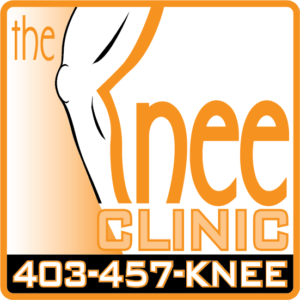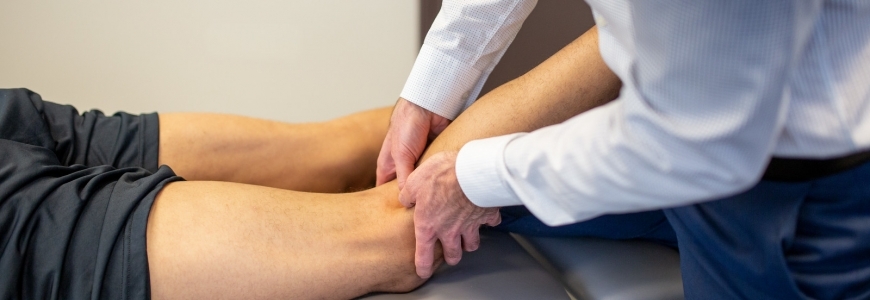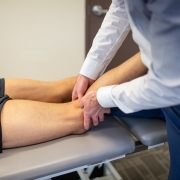Why Manual Therapy could be just what the Doctor Ordered
At Elite Sport Performance and the Knee Clinic, the key to successful outcomes is our three-pronged approach to treatment: treat the problem, strengthen the area, and avoid or modify offending activities. These three components are broad and can encompass a wide variety of decisions and actions. If we zoom in on the first component, ‘treat the problem’, we may encounter a number of treatment options for the problem we are endeavoring to manage, but how do we know what’s best for each patient? The principles of evidence-based medicine would dictate that that the related research, the practitioner’s clinical experience, and the patient’s values all need to be considered when determining the best course of action.
When it comes to joint pain, we often think of injections or surgery as our only options, however, it is important to understand that the bio-mechanics of a joint, or the way a joint functions is heavily dependent on structures that are adjacent to it. Think of the muscles, tendons, ligaments, and nerves that relay messages to and from the brain about that joint. Knowing this, it is not surprising that the related research around managing many musculoskeletal conditions is to employ what is known as a ‘multi-modal’ approach to treatment. This means that the best outcomes are achieved by utilizing a variety of treatment options, including addressing changes to fascia, muscles, and tendons surrounding a joint, in addition to working through an individualized strengthening program to re-calibrate or rehabilitate the function of that joint, and perhaps even protecting it from further damage with a brace.
Whether due to trauma or degenerative changes over time, cellular scar tissue, or fibrosis can accumulate and disrupt optimal function of a joint or tissue, and can even be a cause of pain. Using a variety of clinically-derived manual, or hands-on treatment protocols such as Active Release Techniques, Graston Technique, and other similar approaches, practitioners can improve the rate and quality of healing as well as aid in restoring optimal function to a joint or tissue. This ‘hands-on work’ will often be prescribed as part of a patient’s individualized plan of management, and would fall under the ‘treat the problem’ component.








